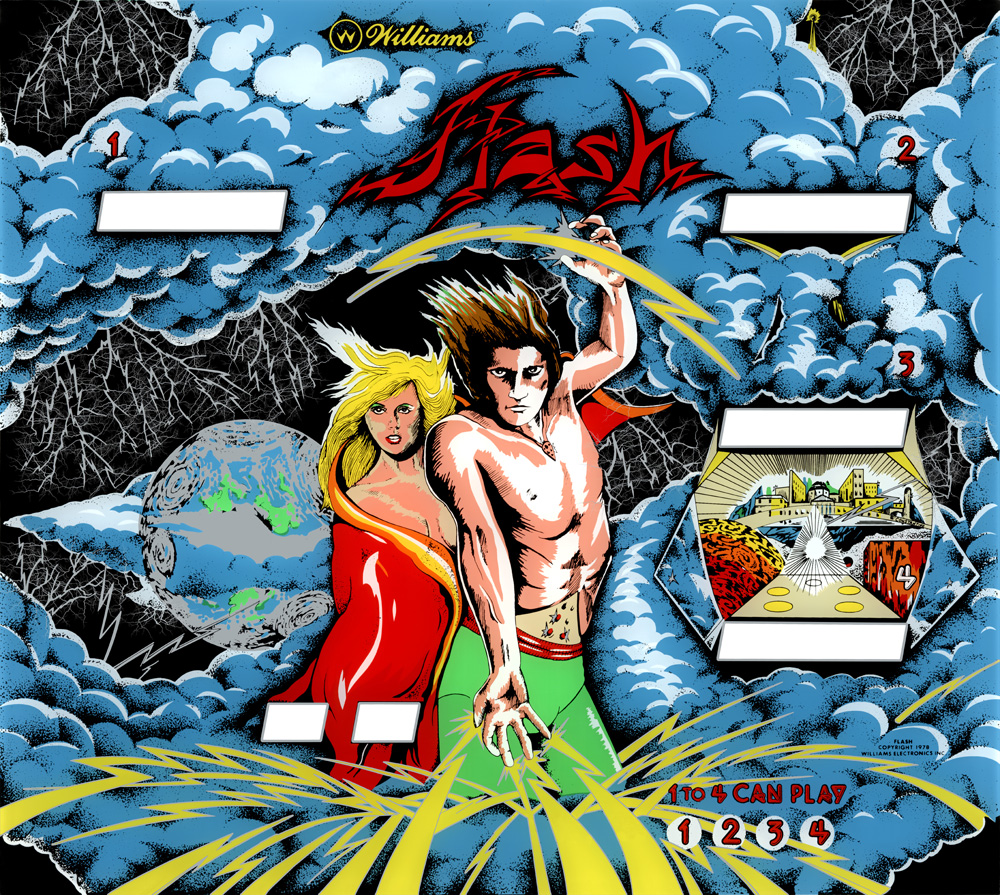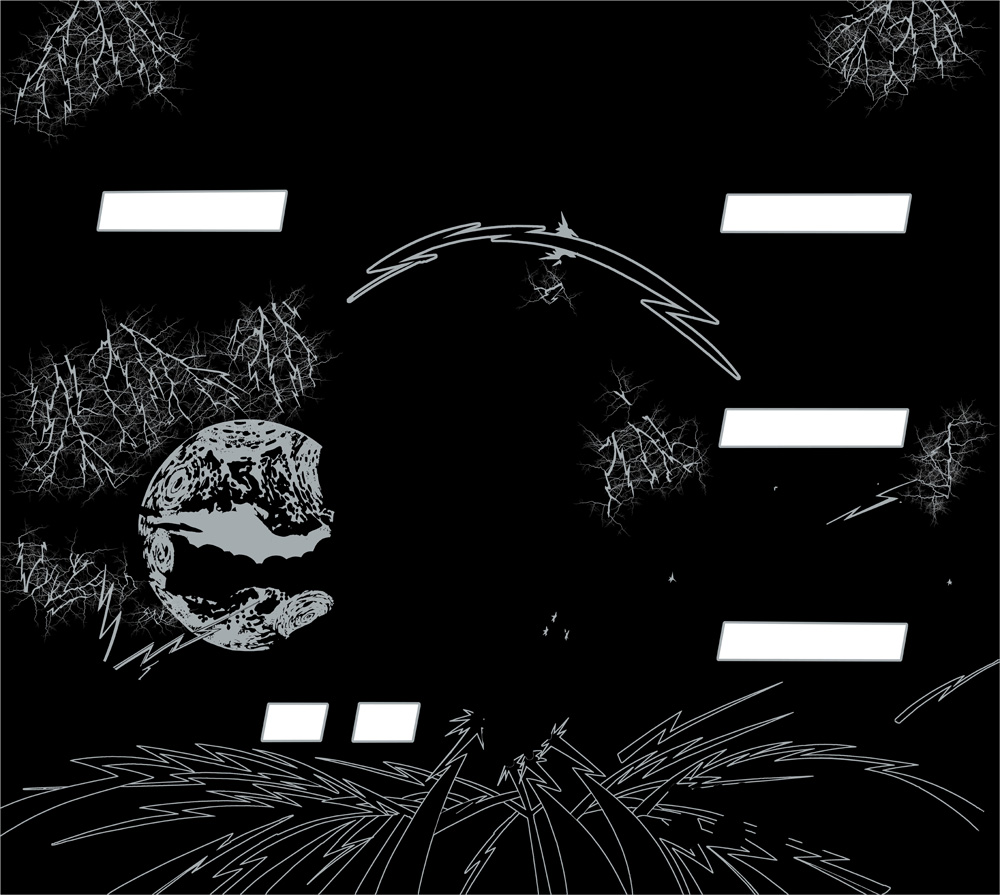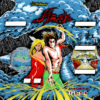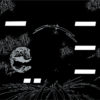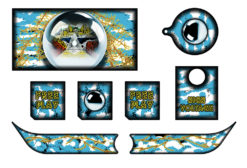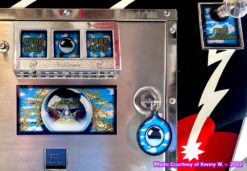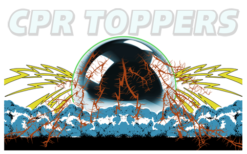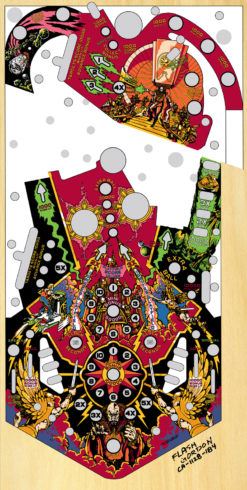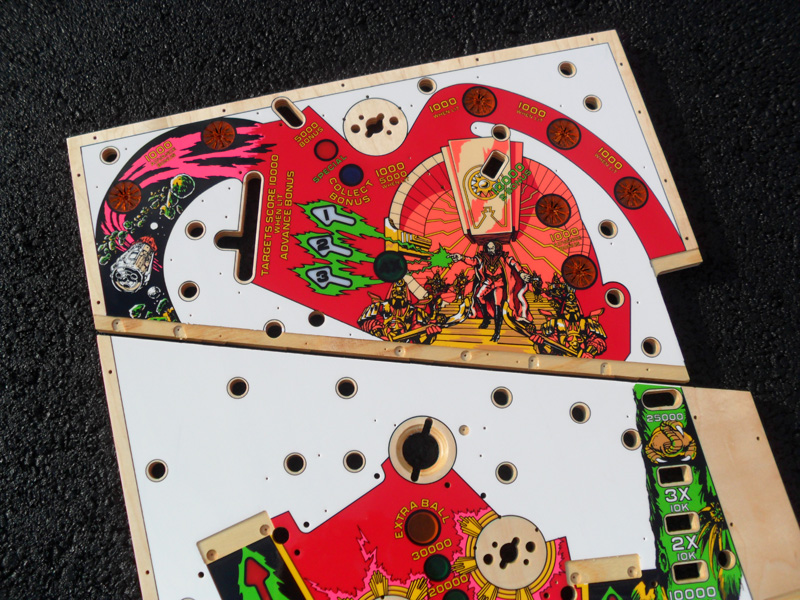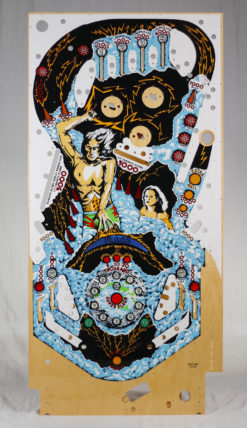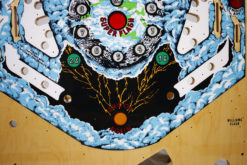Flash Custom Backglass (Mirrored)
$289.00 USD – $315.00 USD
As we all know, the original Flash backglass was never mirrored. So we decided to give the Flash backglass some “silver” love! The CPR reproduction Flash backglass has been tastefully upgraded with custom mirror artwork. See photo gallery for identification of custom mirrored areas.
Reproduction backglass produced on genuine tempered glass. Polished corners and edges. Silkscreened ink-mirroring.
Includes a custom made CPR-matched-thickness stainless steel liftbar & trim kit, by default – OR you may pick from a selection of powder-coated liftbar color choices.
Gorgeous replacement, finally get rid of that old chipped, crackled, or shedding original backglass.
|
||||||
| Manufacturer: | Williams Electronics, Incorporated (1967-1985) [Trade Name: Williams] | |||||
| Date Of Manufacture: | October 27, 1978 | |||||
| Model Number: | 486 | |||||
| MPU: | Williams System 4 | |||||
| Type: | Solid State Electronic (SS) | |||||
| Production: | 19,505 units (confirmed) | |||||
| Theme: | Fantasy | |||||
| Notable Features: | Flippers (3), Pop bumpers (3), Slingshots (2), 5-bank drop targets (1), 3-bank drop targets (1), Standup targets (2), Spinning target (1), Kick-out hole (1), Star rollovers (5). Ball shot into play crosses the playfield to get to the top. Flash Lamps under playfield.
Maximum displayed point score is 999,990 points per player. |
|||||
| Design by: | Steve Ritchie | |||||
| Art by: | Constantino Mitchell, Jeanine Mitchell | |||||
| Mechanics by: | John Jung | |||||
| Sound by: | Randy Pfeiffer | |||||
| Software by: | Randy Pfeiffer | |||||
| Notes: | ‘Flash’ was the first game from any manufacturer to have a dynamic background sound during gameplay. It is also the first game from any manufacturer to use Flash Lamps, which provide a temporary burst of flashing light intended primarily for the sake of its visual effect, in contrast to the usual playfield lamps that either provide constant general illumination or turn on and off only as indicators of specific playfield objectives or their point values. Designer Steve Ritchie comments:I “invented” background sound at Atari, but management wouldn’t have it, so I asked Randy Pfeiffer to create a continuously cycling complex sound that increased in pitch and speed of cycling, and he did both. That changing background added a tension and excitement that was never present in earlier games. That sound also broadcasted how well the player was doing. If you heard the only game that made a background sound in an arcade at high pitch and a fast cycle, all eyes were on you, sometimes gathering a small crowd in those days.
The production run of this game was far higher than previous Williams games. Steve Ritchie comments:Towards the end of the run of Flash, I asked Jack Mittel, then-VP of sales, why we wouldn’t try to push past the 20,000 unit mark. He replied, “We want to leave the market wanting.” Steve also tells us about the prototype backglass shown in this listing:We printed two backglasses in a blue background because management was scared that the black background wouldn’t be accepted. We also printed two red ones. I owned them all, but both reds and one blue disintegrated as I unwrapped them after being in storage for 34 years. The ink was in a pile at the bottom of the package! No games were sent out with any color other than black background, which was widely accepted and dramatic when lit “back in the day.” Reportedly, later production units had System 6 CPU boards. Steve tells us that a subsequent game “Super Flash” was contemplated in 1986 as a ‘sequel’ but never made it as far as the drawing board. *Info Courtesy of IPDB |
|||||
Care Instructions
REPRODUCTION BACKGLASS CARE and RECOMMENDATIONS
- Never “triple thick” or apply any additional coatings to the backside of the glass.
- Alcohol, acetone, and most ‘rattle-can’ liquids must NEVER contact with the ink.
- If laying a glass down on its backside, always put down a towel or fabric to lay on.
- The glass stock is tempered – so avoid significant hot-cold temperature shifts.
- Be cautious of any impacts to the edges, such as setting the glass down on a concrete floor.
- Never allow ‘sitting’ moisture on the backside. After 5-7 minutes there is a risk of ink degradation.
- Do not spray cleaner directly onto the backside as prolonged contact with liquids may damage your glass.
- If you must clean the backside (bulb dirt, etc.) wipe with a pre-dampened cloth (water or Windex).
- After wiping, make sure the liquid is dried off (wipe all the way to dry). Do not allow any moisture to sit.
- Glass cleaner sprayed directly on the fronts is fine.
- Don’t let cleaner sit between the channels and your glass.
*Important info when purchasing Lift Bar Kits*
The liftbars are all made to the most common backglass width of 28.5 inches, just like they have been sold for decades in the hobby. IF you have a backglass that is of lesser width, the end-user is expected to cut/chop to the lesser length needed.
PLEASE NOTE: These are for 1/8″ -or- 4mm (metric) backglasses. Sorry, these will not fit on “thick style” 3/16″ or 5mm backglasses, either original or CPR repro (roughly any glass for a game 1979 or prior). We do not offer 3/16″ style liftbars at this time.

